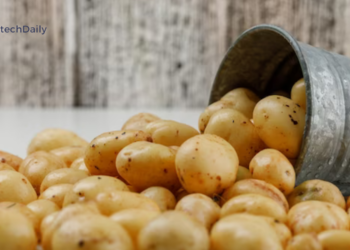This article is about the benefits of crop rotation and how to implement it on your farm. Crop rotation is a farming practice that involves the systematic planting of different crops in a particular order.
Crop rotation has been used for centuries to enhance soil fertility, control pests and diseases, and improve crop yields. This article discusses the benefits of crop rotation and provides practical tips on how to implement it on your farm.
Crop rotation is a practice that involves planting different crops in a particular order on a particular piece of land. This practice has been used for centuries to improve soil fertility, control pests and diseases, and enhance crop yields.
Crop rotation involves the systematic planting of crops in a specific sequence. The sequence varies depending on the crops being grown, the soil type, and other environmental factors. Crop rotation is an essential component of sustainable agriculture and can help reduce the need for synthetic fertilizers, pesticides, and herbicides.
Benefits of Crop Rotation

- Soil Fertility: Different crops have different nutrient requirements. By planting different crops in a particular sequence, soil nutrients are replenished, and soil fertility is enhanced.
- Pest and Disease Control: Crop rotation can help reduce pest and disease pressure. Some pests and diseases are specific to certain crops. By rotating crops, pests and diseases are prevented from building up in the soil, reducing the need for synthetic pesticides.
- Weed Control: Different crops suppress weeds at different rates. Crop rotation helps reduce weed populations and prevents the buildup of herbicide-resistant weeds.
- Improved Soil Structure: Different crops have different root systems, some of which can break up compacted soil, improving water and nutrient uptake.
How to Implement Crop Rotation
- Evaluate Your Soil: Before implementing crop rotation, it is important to evaluate your soil’s characteristics, such as pH, nutrient content, and soil structure. This information will help you determine which crops are best suited for your soil type.
- Choose Your Crops: When selecting crops for rotation, consider the nutrient requirements of each crop, their pest and disease susceptibility, and their ability to improve soil structure.
- Plan Your Rotation: Once you have selected your crops, plan your rotation sequence. The sequence should be designed to balance soil nutrient content, prevent pest and disease buildup, and suppress weed populations.
- Monitor Your Soil: Regular soil testing is essential to ensure that your soil nutrient levels are balanced. Soil testing should be done before planting each crop to determine the appropriate fertilizer application rates.
- Adjust Your Rotation: As you implement crop rotation, monitor the performance of each crop and make adjustments to your rotation sequence as needed. For example, if a particular crop is not performing well, consider replacing it with a more suitable crop.
Best Crops for Crop Rotation
Crop rotation is a valuable agricultural practice that involves the systematic planting of different crops in a particular sequence over time to improve soil fertility, pest and disease control, and weed suppression. Effective crop rotation requires selecting crops that complement each other and creating a rotation sequence that balances nutrient content, pest and disease control, and weed suppression.
The following are some of the best crops for crop rotation:
- Legumes: Legumes, such as beans, peas, and lentils, are excellent for crop rotation because they are nitrogen-fixing crops. These crops can fix nitrogen from the atmosphere and store it in their roots, which improves soil fertility and reduces the need for synthetic fertilizers. Legumes also help break up compacted soil, making it easier for other crops to grow.
- Brassicas: Brassicas, such as cabbage, broccoli, and cauliflower, are excellent for crop rotation because they are known for their pest and disease suppression properties. These crops contain compounds that repel pests and reduce the growth of diseases in the soil. Brassicas also have deep roots that help improve soil structure and water retention.
- Cereals: Cereals, such as wheat, corn, and barley, are suitable for crop rotation because they are heavy feeders that require a lot of nutrients to grow. These crops can help to reduce soil fertility imbalances by utilizing excess nutrients left behind by other crops. Cereals also have fibrous root systems that help improve soil structure and water retention.
- Root Crops: Root crops, such as carrots, potatoes, and onions, are excellent for crop rotation because they have deep roots that help break up compacted soil and improve soil structure. Root crops also help reduce weed pressure by shading the soil and reducing moisture levels, making it difficult for weeds to grow.
- Cover Crops: Cover crops, such as clover, rye, and vetch, are planted primarily to cover the soil during the fallow period in a crop rotation sequence. These crops help reduce soil erosion, improve soil structure, and suppress weeds. Cover crops also add organic matter to the soil, which improves soil fertility and reduces the need for synthetic inputs.
In conclusion, crop rotation is a valuable agricultural practice that requires careful selection of crops that complement each other and create a balanced rotation sequence.
Legumes, brassicas, cereals, root crops, and cover crops are some of the best crops for crop rotation due to their soil fertility improvement, pest and disease control, and weed suppression properties.
By incorporating these crops into their rotation sequence, farmers can improve soil health and reduce the need for synthetic inputs, leading to more sustainable and profitable agriculture.
Challenges of Crop Rotation

Crop rotation is a valuable agricultural practice that offers numerous benefits such as improved soil fertility, pest and disease control, and weed suppression. However, crop rotation also presents several challenges that farmers must overcome to achieve its full benefits.
The following are some of the common challenges of crop rotation:
- Time and Labor: Crop rotation requires significant planning, management, and labor to implement effectively. Farmers must carefully select crops that complement each other and create a rotation sequence that balances soil nutrient content, pest and disease control, and weed suppression. Additionally, farmers must invest time and effort in monitoring their crops, making adjustments to the rotation sequence as needed, and managing soil fertility.
- Limited Crop Options: Crop rotation requires the use of different crops in a particular sequence, which may be challenging in regions with limited crop options due to climate and soil conditions. Farmers in such regions may have limited options for selecting crops that complement each other, making it difficult to create an effective rotation sequence.
- Market Demand: Crop rotation may limit the ability of farmers to grow crops that are in high demand, affecting their profitability. Some crops, such as cash crops, may have higher market value, but they may not be suitable for crop rotation due to their nutrient requirements or pest and disease susceptibility.
- Crop Yield Variability: The yield of each crop may vary depending on environmental factors such as weather conditions and soil moisture levels. As a result, farmers may experience fluctuations in crop yields from year to year, affecting their income and profitability.
- Soil Nutrient Imbalances: Improper crop rotation practices may lead to nutrient imbalances in the soil, affecting crop yields and soil health. For instance, over-reliance on certain crops can deplete the soil of specific nutrients, leading to reduced crop yields in subsequent years.
- Pests and Diseases: While crop rotation can help reduce pest and disease pressure, it may not eliminate them entirely. Farmers may still need to use pesticides and other chemical inputs to control pests and diseases that may affect their crops.
In conclusion, while crop rotation offers numerous benefits, it also presents several challenges that farmers must overcome to achieve its full benefits. Proper planning, management, and monitoring can help farmers overcome these challenges and maximize the benefits of crop rotation.
Conclusion:
Crop rotation is a valuable practice for sustainable agriculture that provides many benefits, including improved soil fertility, pest and disease control, and weed suppression. By selecting crops that complement each other and rotating them in a specific sequence, farmers can enhance soil health and reduce the need for synthetic inputs.
While crop rotation can be challenging, proper planning and management can help maximize its benefits. By implementing crop rotation on their farms, farmers can improve their bottom line while contributing to a healthier environment.













